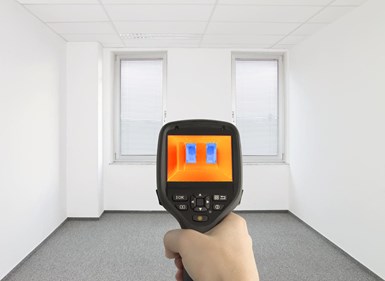OCSiAl Uses Graphene Nanotubes In Conductive Heating Paint
Graphene nanotubes can be used in almost all types of coatings due to their high electrical conductivity, strength and low working concentration.
OCSiAl, a high purity graphene nanotubes suppier, was able to achieve increased productivity and improved performance of its conductive heating paint by replacing standard conductive carbon additives, whose working concentration was about 25% of the total compound weight, with 0.5% graphene nanotubes. The paint is applied to walls or panels through an ultra-thin coating layer. Copper electrodes supply a current of 12-24 volts, which is reportedly enough to heat the paint up to 40°C, but still be safe for human contact. The surface is then covered with a standard paint.
Vladimir Kravchenko, vice president of development and support leader for thermoplastics, thermoset and construction materials at OCSiAl, says, “In comparison with carbon black, graphite or metal parts, nanotubes make it possible to obtain a more uniform consistency of paint and do not affect its practical properties. The key for manufacturers is the ability to speed up production and reduce costs, while gaining an improvement in the properties of the final products.”
Graphene nanotube paint and varnish solutions for residential heating are said to have passed the development phase and are entering the market via eco-friendly heating panels and conductive paints.
Graphene nanotubes can be used in almost all types of coatings – including powder coatings, heating films, automotive primers, epoxy and polyurethane coatings, linings and various gelcoats – due to their high electrical conductivity, strength and low working concentration, starting in many applications from only 0.02%.
Related Content
-
Shedding Light on Surface Inspection
State-of-the-art reflector-based lighting system improves luminosity and ergonomics for surface inspection tasks while reducing energy usage.
-
Masking Solutions Provider CFS Dramatically Expands Capabilities and Capacity
Custom Fabrication & Supplies (CFS) completed a new plant expansion packing 10 times the capacity into twice the space. It dramatically enhances the supplier’s custom capabilities to provide extremely precise and cost-effective masking solutions.
-
Mix of Automation and Skilled Employees Generates Quality
This Pennsylvania plating company’s general manager shares insights about being recognized as a Top Shop for several consecutive years as well as his thoughts about automation, customer service, hiring skilled workers, the challenges of installing a new line and more.










.jpg;maxWidth=300;quality=90)




